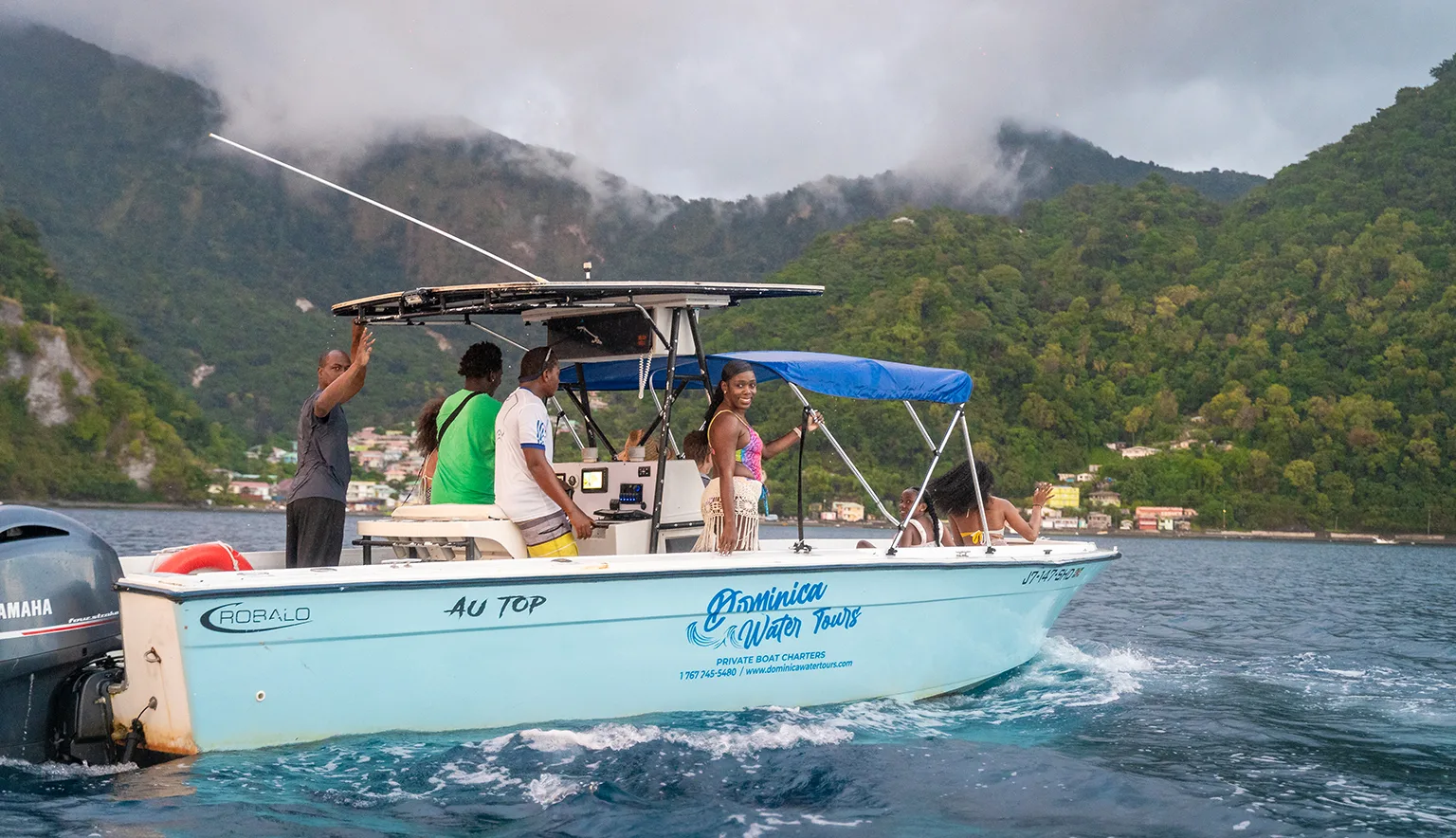We catch up with the Discover Dominica Authority (DDA) as it continues to evolve its global brand reach with a sustainability-centred approach. CEO, Marva Williams, delves deeper into its targeted tourism strategy and why 2026 is the year to visit this thrilling destination.
Q&A WITH THE DISCOVER DOMINICA AUTHORITY
Firstly, how does the DDA continue to work towards its mission of promoting and developing Dominica as a quality tourism destination?
Marva Williams, CEO (MW): The DDA’s mandate is to attract as many stay-over visitors as possible. We do this by spreading awareness of the destination and continually sharing Dominica’s story with the world.
Our promotional activities are highly targeted, focusing on nature lovers and eco-travellers who value sustainability and the protection of the environment. In line with this, we position Dominica as The Nature Island, showcasing our commitment to sustainability through initiatives such as our geothermal energy development, sperm whale reserve, and new marina, amongst others.
We also place strong emphasis on community-based tourism. Much of our destination marketing is rooted in our communities, relying on local people to bring Dominica’s unique experiences to life.
All of these efforts come together in a comprehensive strategy that strengthens our ability to promote and develop Dominica’s tourism industry.
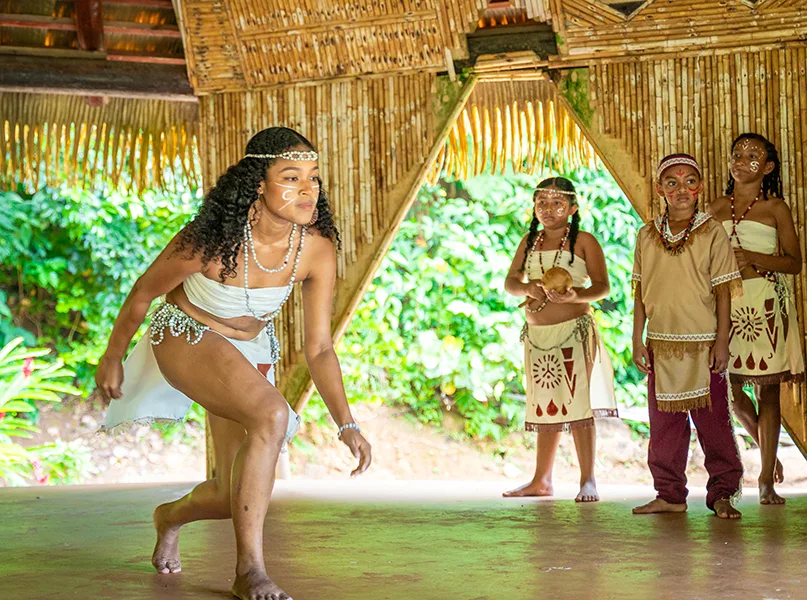
How has the DFC continued to promote the island’s many carnivals and festivals in the last year?
MW: The committee now operates as part of the departments within the DDA, as we recognise that festival tourism is a major driver of stay-over visitors across many destinations.
Festivals play a vital role in showcasing our culture, heritage, and traditions. Through our carnivals, we celebrate what makes us unique as people and share the rich stories behind our customs.
The WCMF, a key event on our independence calendar, is a perfect example. 2025 marked Dominica’s 47th anniversary of independence and the 25th edition of the WCMF – a festival deeply rooted in culture. It highlights how Creole heritage connects communities not only in Dominica but also in Saint Lucia, Guadeloupe, Martinique, Haiti, and even parts of Africa. Our own French Creole traditions make us part of that wider cultural network.
We also recognise that there’s a growing niche of travellers who seek authentic enjoyment through festivals and music. People want experiences that are real, local, and meaningful – and our events deliver exactly that.
In addition to the WCMF and Carnival, we host the annual Jazz ‘n Creole Festival, ensuring a vibrant year-round calendar of events. Altogether, festival tourism contributes approximately 12 to 15 percent of our annual stay-over arrivals, making it a significant part of Dominica’s tourism success.

“We also recognise that there’s a growing niche of travellers who seek authentic enjoyment through festivals and music. People want experiences that are real, local, and meaningful – and our events deliver exactly that”
Marva Williams, CEO, Discover Dominica Authority
How do you continue to market Dominica as a destination for eco-conscious travellers seeking authentic and unique experiences?
MW: Our tourism strategy is very focused – it’s not a free-for-all. Everything we do aligns with nature and sustainability.
We consistently communicate Dominica’s identity as The Nature Island, highlighting our commitment to sustainability and authenticity. We promote a destination that is modern yet remains unspoiled – real and genuine, just as it has always been.
When showcasing the island, we highlight the Waitukubuli National Trail, the longest hiking trail in the Caribbean, where visitors can explore rugged landscapes and even hop on a boat to experience Dominica’s natural beauty from the sea.
Dominica is also home to around 300 resident sperm whales. In keeping with our sustainability goals, we’re developing a sperm whale reserve to ensure their long-term protection. Visitors can enjoy whale watching nearly year-round – about 90 percent of the time. We’re also advancing our geothermal energy project, further demonstrating our commitment to green growth.
Sustainability is part of everyday life here. We live off the land – eating what we grow, picking fruits straight from the trees, and preparing meals fresh from our gardens. This way of life is a big part of what we share with the world.
Our underwater world is equally authentic. Our dive sites are naturally formed, not man-made, and our land remains largely protected.
There’s truly so much to say about Dominica, and we weave all of these elements into our messaging to show travellers an experience that’s sustainable, genuine, and one-of-a-kind.
“We consistently communicate Dominica’s identity as The Nature Island, highlighting our commitment to sustainability and authenticity. We promote a destination that is modern yet remains unspoiled – real and genuine, just as it has always been”
Marva Williams, CEO, Discover Dominica Authority
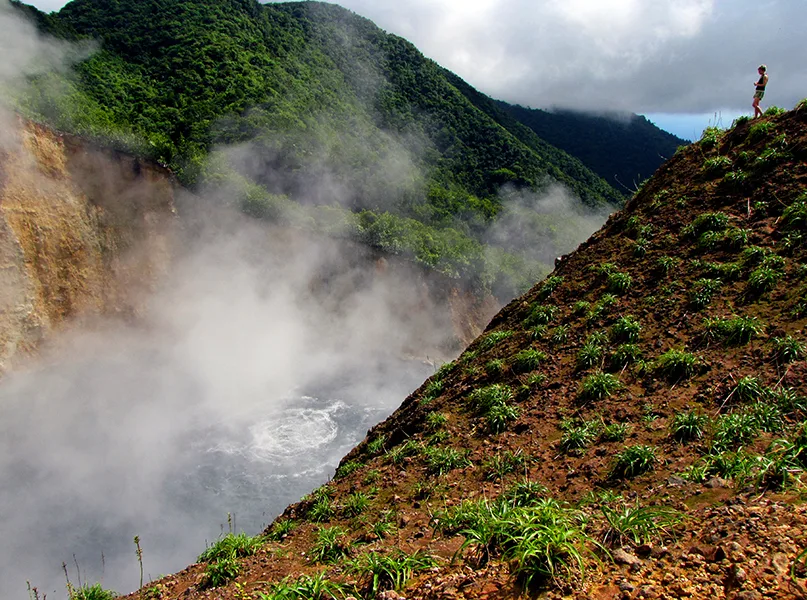
Can you tell us about the development of Dominica’s resorts and spas and how this contributes to the island’s relaxing vibe?
MW: At the moment, we have five hotels under construction. One of them opened its doors in October, and it was wonderful to see it come to life in all its glory. We expect the others to open within the next two to three years.
We’ve also made significant progress in improving air access, which is essential. Better connectivity means more visitors – and more demand for accommodation. As these new hotels come online, we anticipate an increase in our certified room stock to between 1,300 and 1,500 rooms.
Dominica offers a mix of barefoot luxury and eco-friendly properties, including renowned sustainable resorts such as Secret Bay, Coulibri Ridge, and Jungle Bay Dominica. Each embodies sustainability not just in design, but in their overall philosophy and guest experience.
When it comes to wellness, several hotels offer exceptional spa and health experiences – Jungle Bay, for instance, is well-known for this – but we also encourage visitors to explore beyond the resorts. The community of Wotten Waven is famous for its natural hot springs and spa offerings, where guests can soak in warm, mineral-rich waters and feel completely rejuvenated.
Our volcanic landscape enhances that sense of relaxation, from sulphur springs to Champagne Beach, where divers and bathers can watch natural bubbles rise through the water like a glass of champagne.
Additionally, we have over 400 Airbnbs across the island, offering a variety of stays that reflect Dominica’s laid-back and authentic charm.
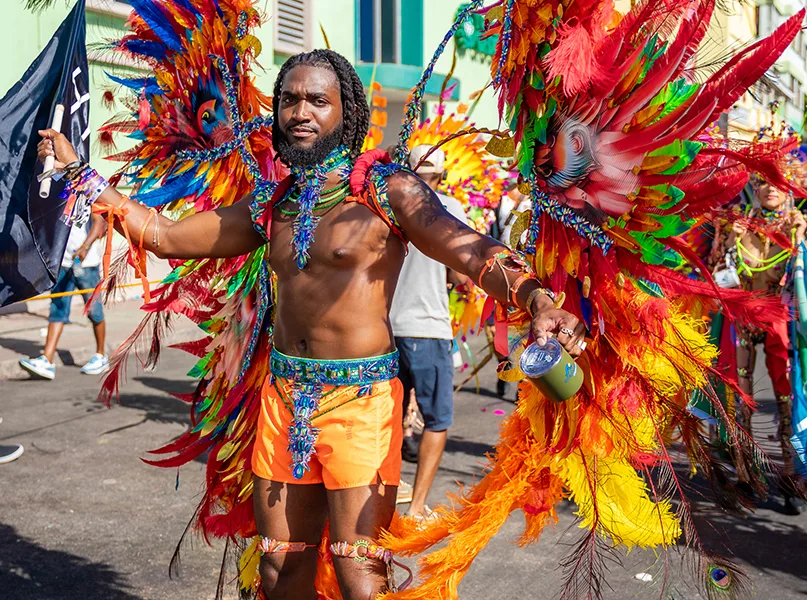
What about your emergence in the luxury yachting sector and development of a state-of-the-art marina?
MW: The yachting sector is a billion-dollar industry, and Dominica is positioning itself to be part of that growth. We’ve seen an emerging yachting scene in the north of the island, which has really demonstrated our potential to expand and strengthen this sector.
We recognise that yachting appeals to a distinct niche market – travellers seeking exclusivity, comfort, and unique destinations. Dominica offers exactly that with its diverse natural and cultural experiences.
This understanding is driving the development of our state-of-the-art marina, designed to accommodate larger and taller yachts and enhance the overall visitor experience. It’s an exciting step forward in broadening Dominica’s tourism offerings and tapping into a high-value segment of the market.
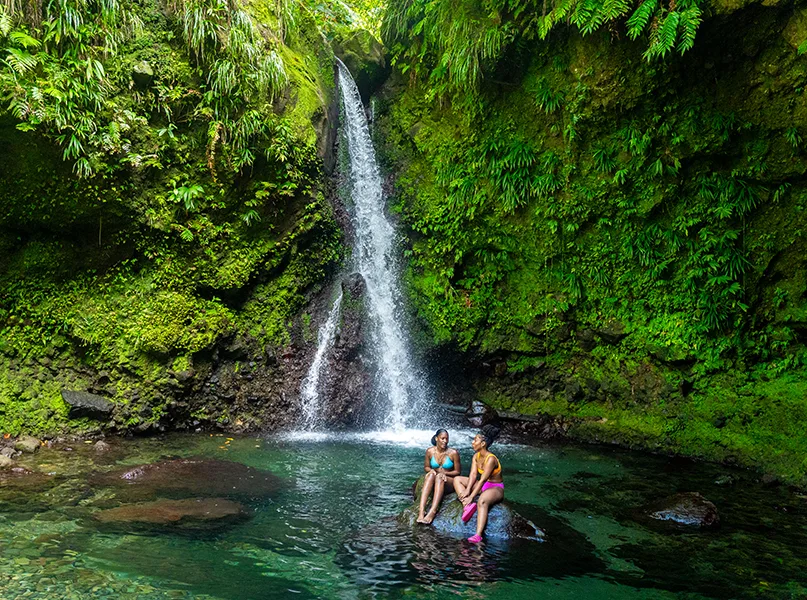
Looking ahead to next year, how are you working to appeal to a new wave of travellers?
MW: One of the key areas the DDA has focused on is digital marketing. We recognise that there are billions of people around the world – and about 75 percent have a cell phone in their hand. To stay relevant and top-of-mind, we have to meet people where they are, which is in the digital space.
Our social media strategy now has a more targeted and data-driven approach. Over the past few months, we’ve worked to connect with travellers seeking something authentic and different on a relatively undiscovered island like Dominica.
At the same time, we understand that digital platforms aren’t the only channel to reach our audience. We’ve strengthened our participation at trade shows and continue to engage in personal business-to-business (B2B) and business-to-consumer (B2C) outreach.
We also maintain a strong presence across traditional media, particularly in markets where print and television remain influential, such as parts of Europe and the Caribbean. We’re strategically inserting Dominica into those spaces in a cost-effective way to ensure broad visibility.
Another major development on the horizon is Dominica International Airport, set to open in 2027. This will significantly improve air access, attracting new carriers and making the destination more accessible to international travellers.
As access improves, Dominica will naturally become part of more travel conversations. We’re already building that momentum through consistent PR, trade engagement, and research-driven marketing. Our goal is to continue connecting the dots and welcoming more visitors to The Nature Island.
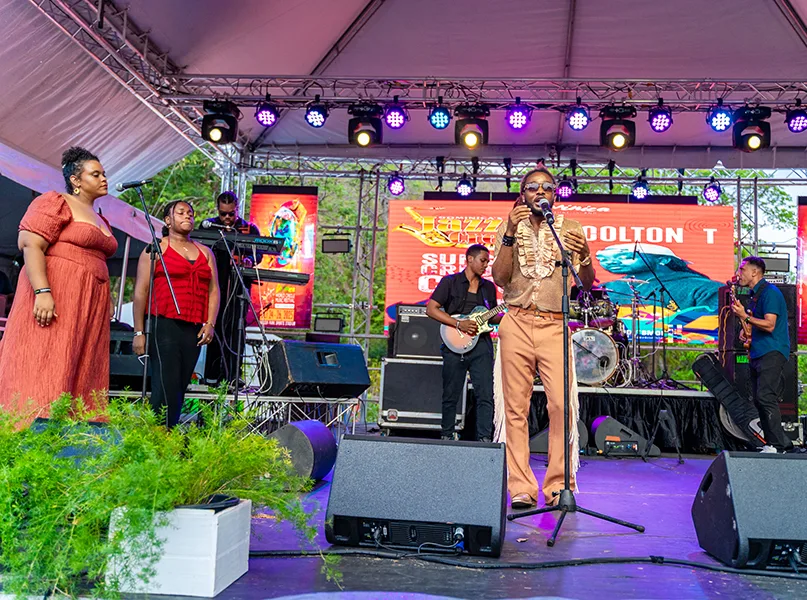
Finally, what makes 2026 the year to visit Dominica?
MW: We are The Nature Island, and that’s a message we proudly share every year. In 2026, if you’re just discovering Dominica, this is truly the time to visit.
You’ll be part of the first wave of travellers to fully experience this rugged, authentic island – a destination where 60 percent of the landscape is pure nature. Our volcanic terrain means we’re not known for white sandy beaches, but rather for our striking black sand shores and dramatic scenery.
Dominica offers rejuvenating experiences unlike anywhere else – from bubbling hot springs and ocean adventures to breathtaking underwater worlds. For travellers seeking health, wellness, and the chance to reconnect with nature, this is the place to be.
Whether you’re planning a family getaway, a stay in one of our many Airbnbs, or a luxurious escape at one of our world-class eco-resorts, Dominica has something for every type of traveller.
In 2026, we’re also set to launch our new cable car, which will take visitors over Trafalgar Falls and the Valley of Desolation in just 20 minutes – an unforgettable way to immerse yourself in the island’s lush, green beauty.
And, of course, our greatest asset is our people – warm, welcoming, and ready to make every visitor feel right at home. There are countless reasons to visit Dominica in 2026, but above all, it’s the perfect time to experience the island’s natural magic for yourself.


